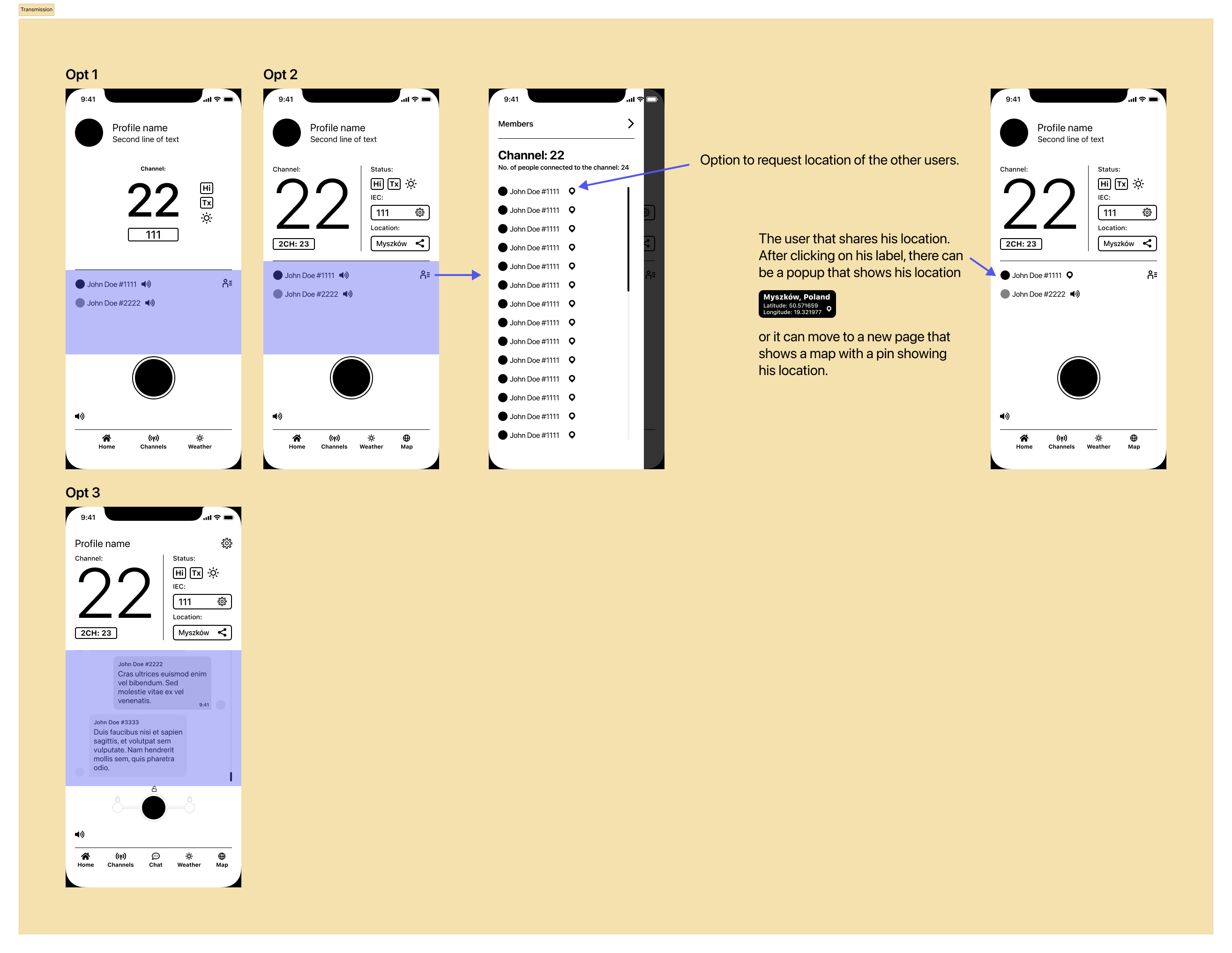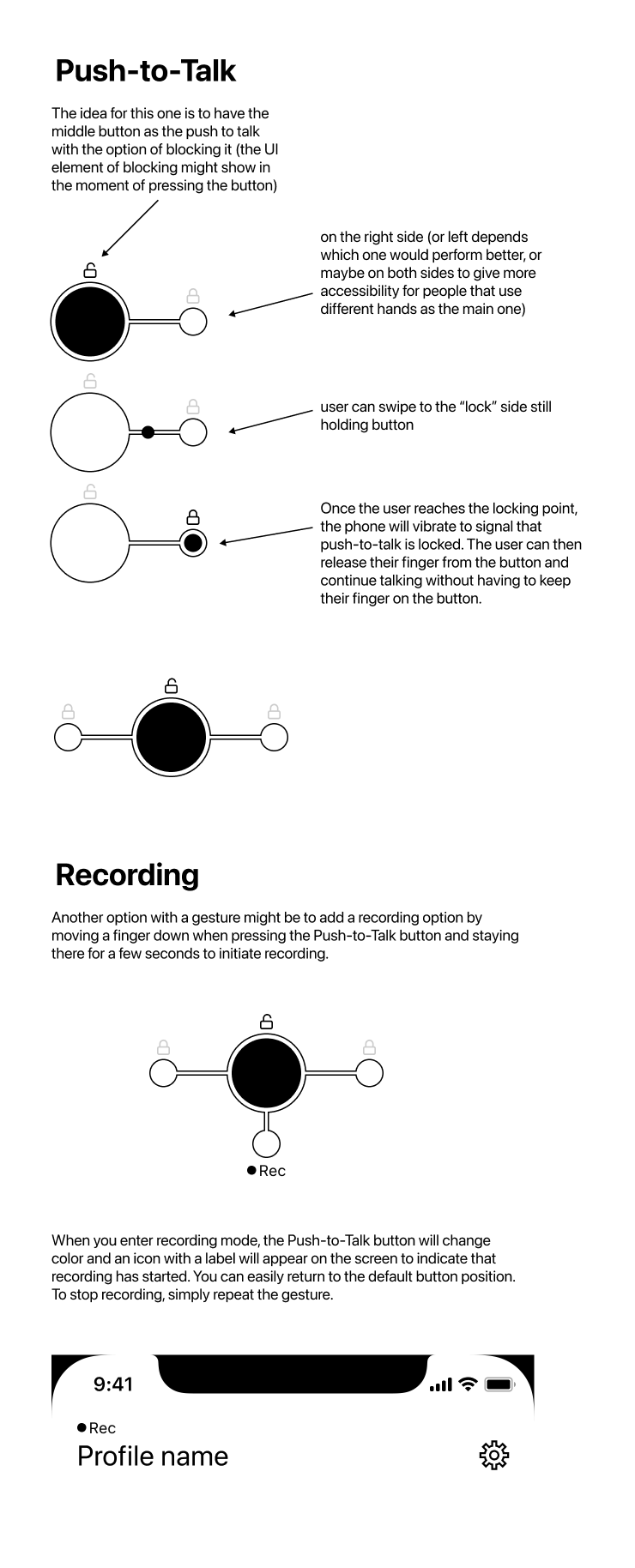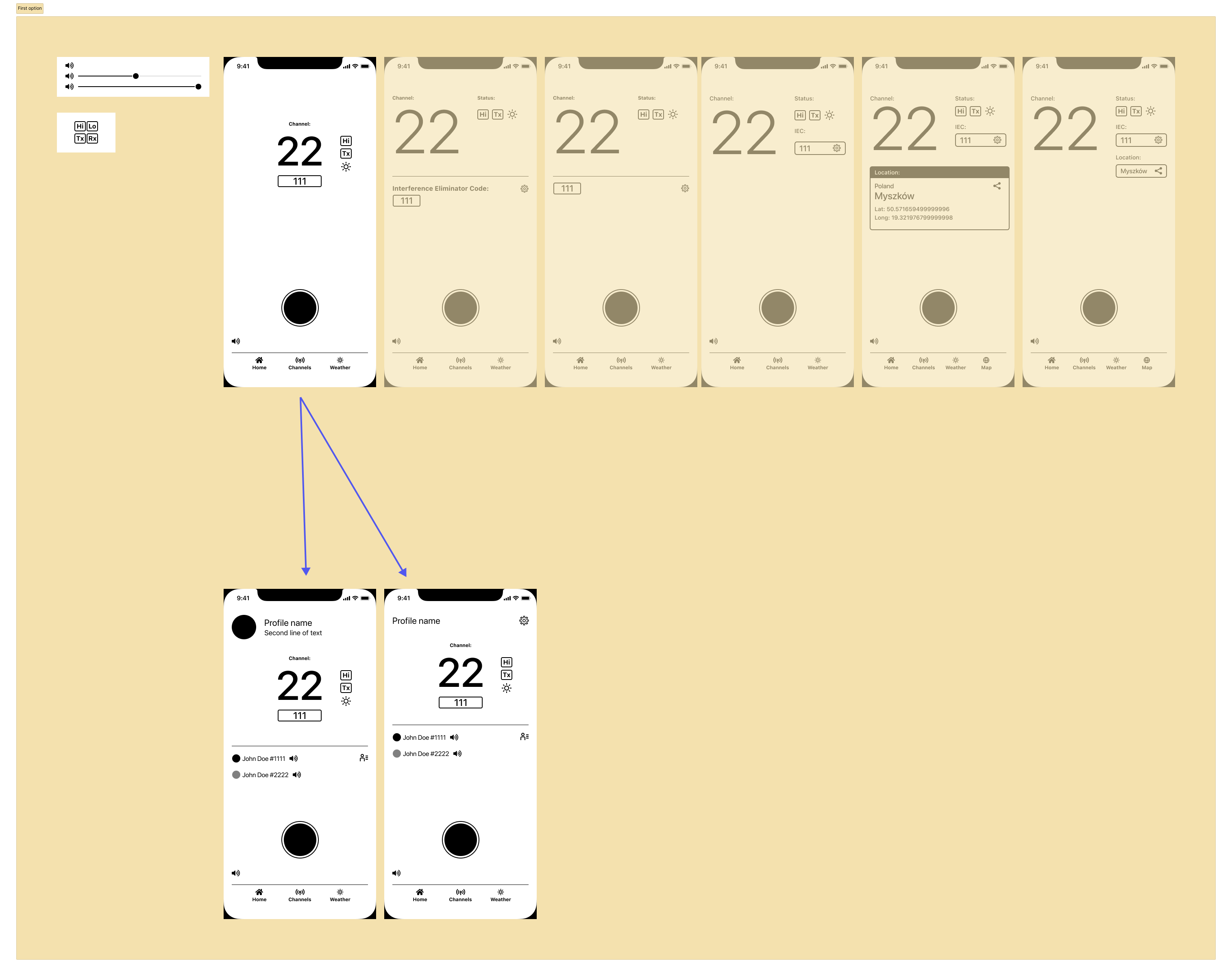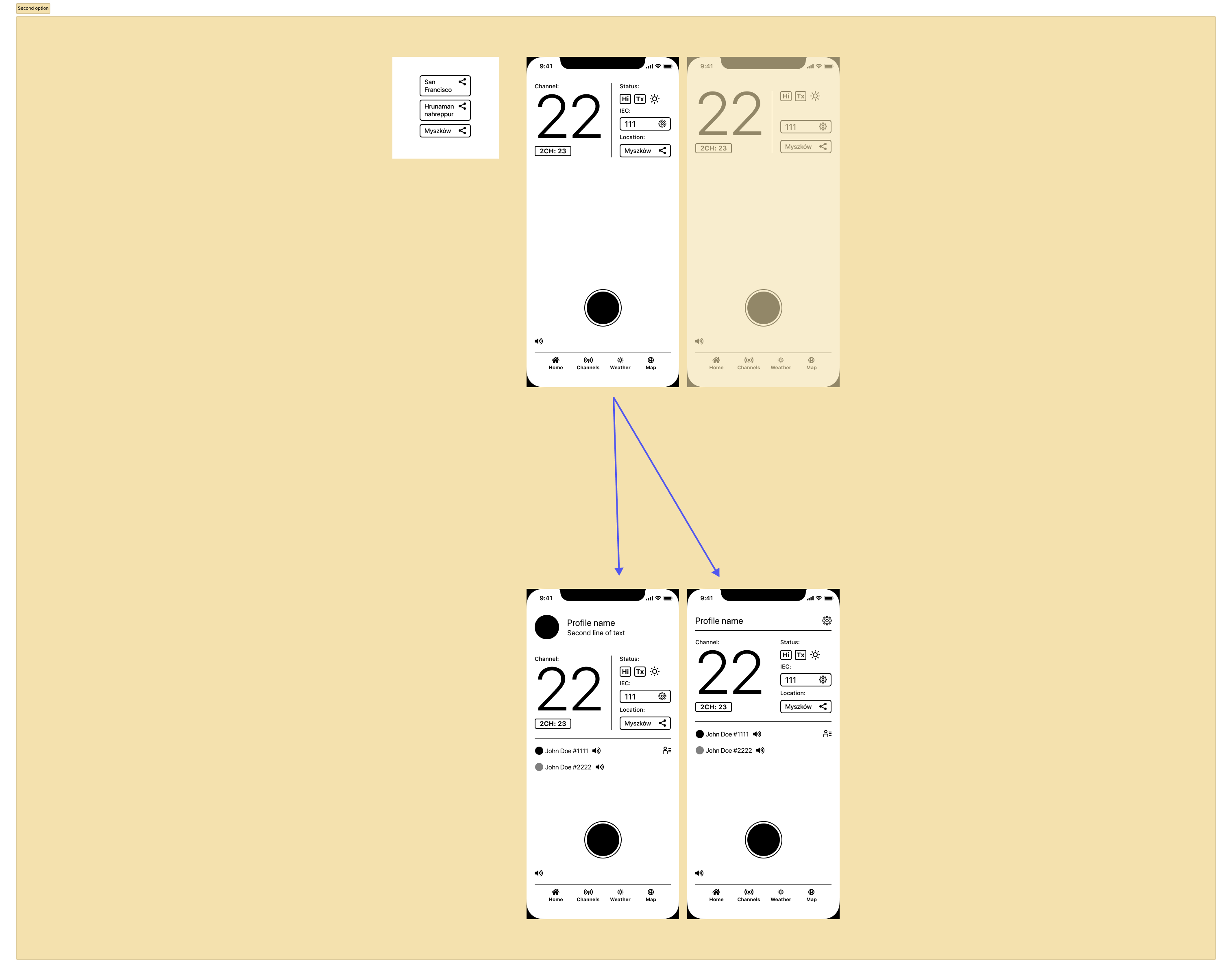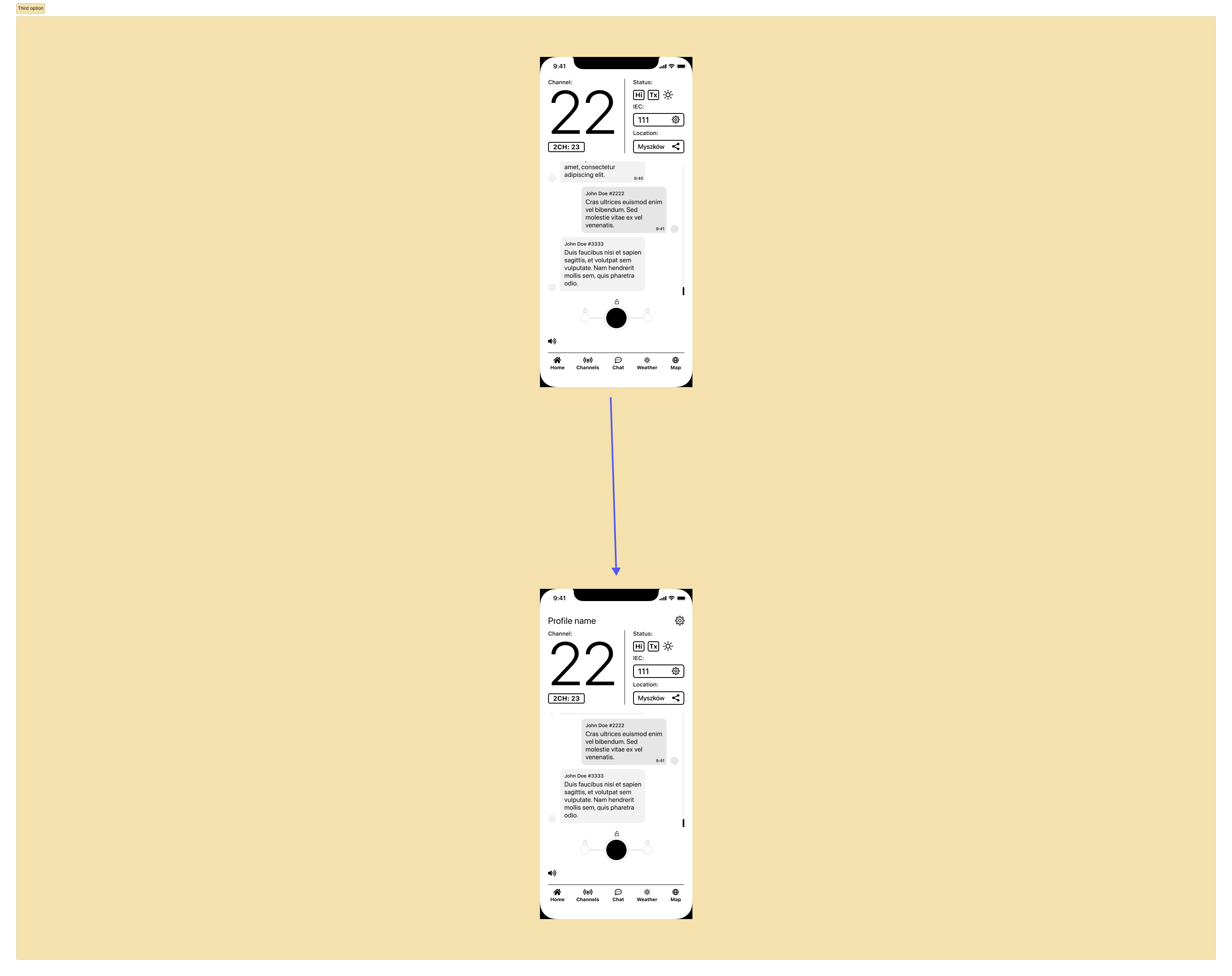Research
Before beginning this task, I conducted research to identify the necessary functionalities of the physical device that must be implemented to ensure that the app functions like a Walkie-Talkie.
Based on it, I prepared a list of these functions and how they work.
Full size images:
Research
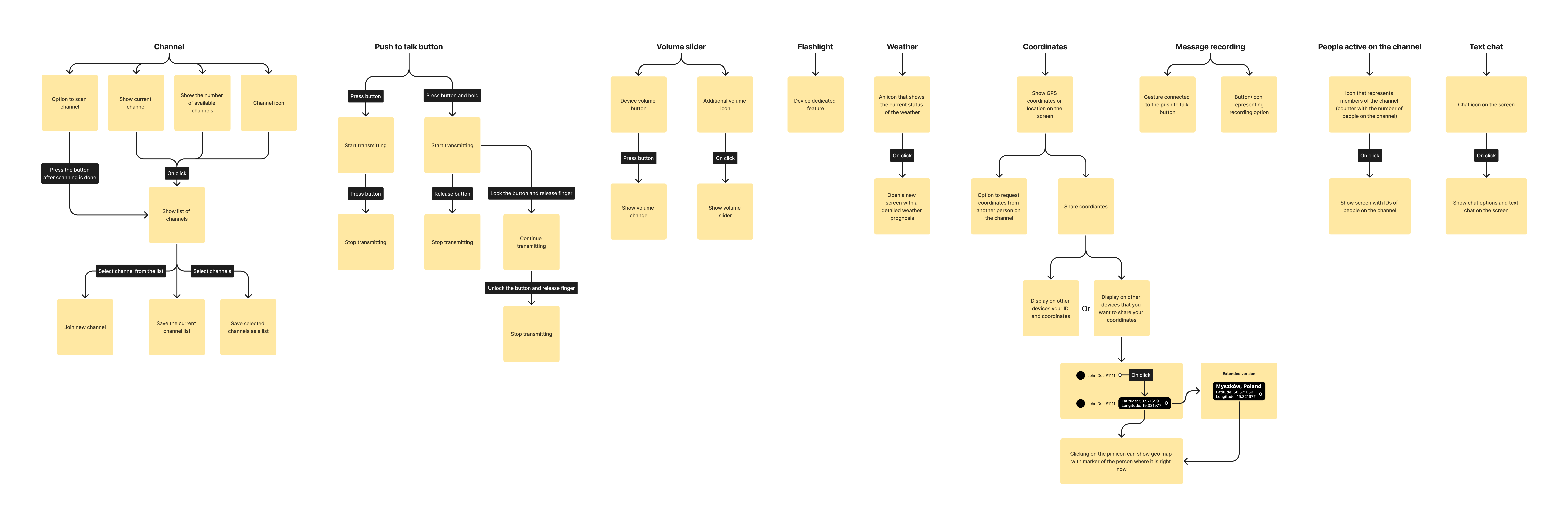
Final designs
These are my three wireframes for this task.
The position of the Push-to-Talk button was the first thing I was thinking about. So on a handheld radio, it is situated on the left side of the device.
On the iPhone, in this place, we have a volume button. Putting this button somewhere on the screen edge makes it difficult to click on it.
Also, if you use the phone in the right hand, you will cover your screen with your thumb or need really long fingers to click on it “from behind.”
That’s why I put it on the bottom and in the middle of the screen so everybody has the same access to it.
Full size images:
Final designs
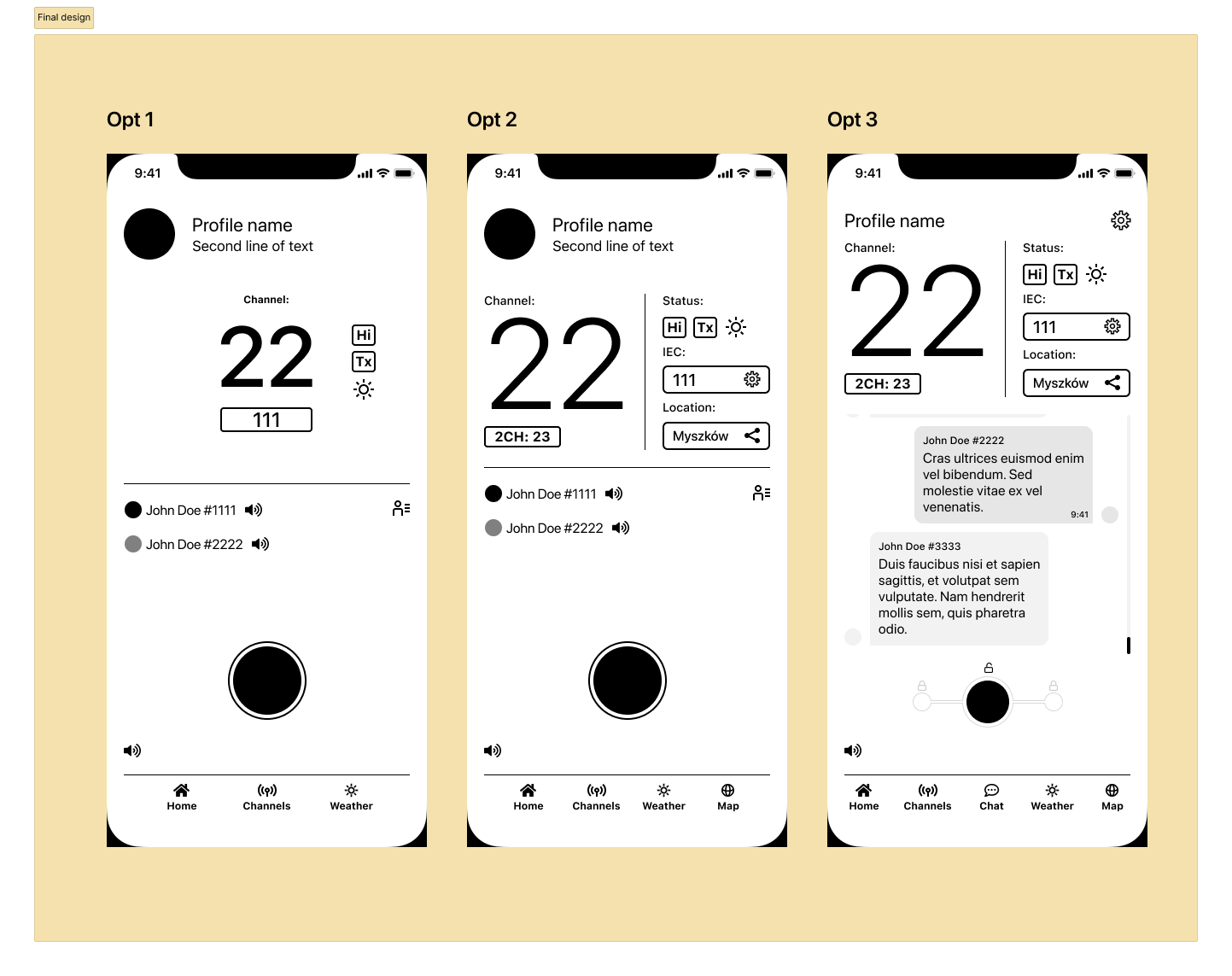
Profile
Like all other apps, users are required to create an account and profile. The information provided in the profile allows for identification of participants in the channel, their location and who is speaking.
Full size images:
Profile screen
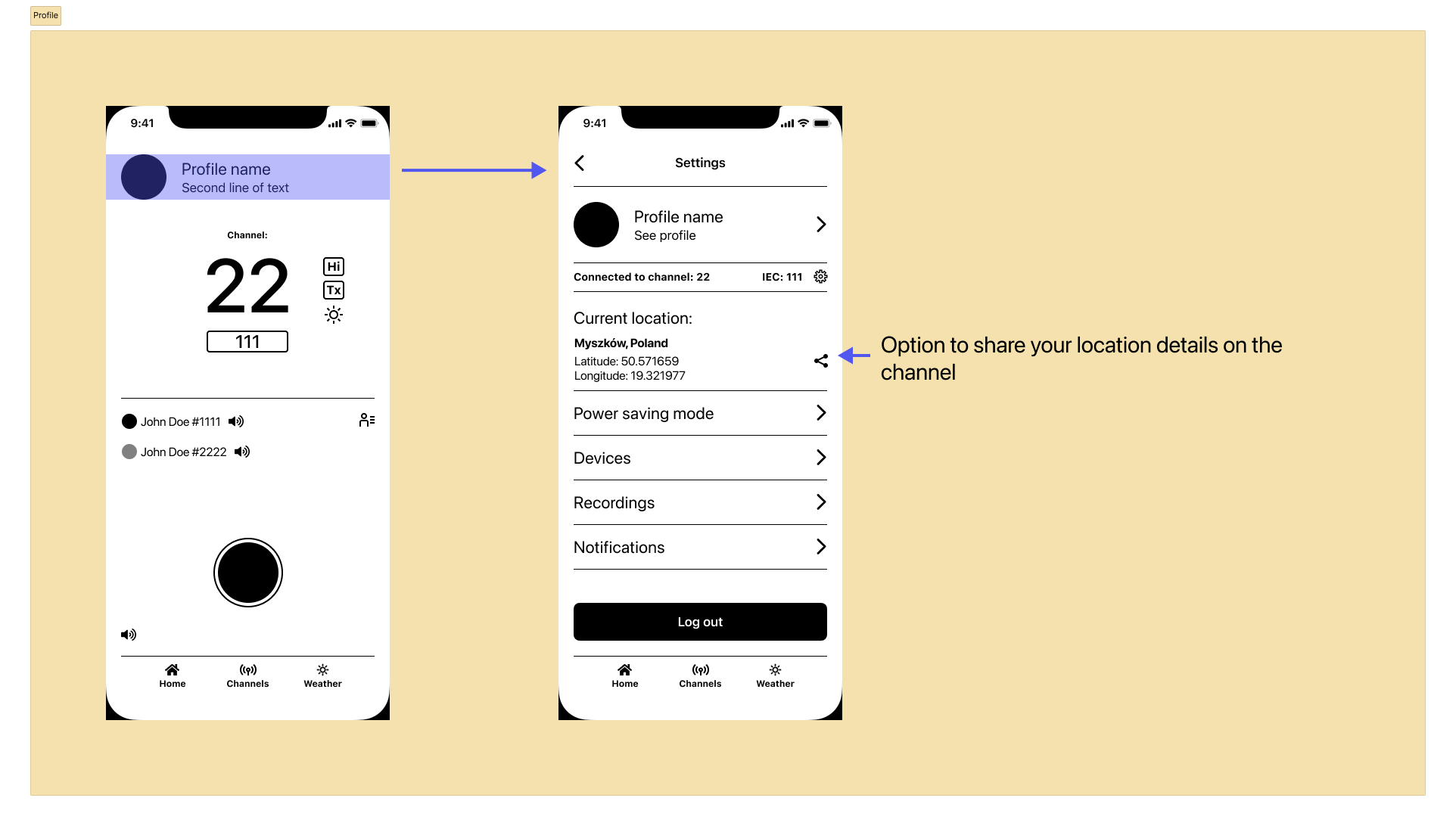
Channel status
First option is more straightforward and cleaner than the second one. However, the second one includes labels to clarify the sections, which might benefit new users.
Full size images:
Status section

Transmission and people on the channel
Transmission space in these options contains:
- A list of people currently talking.
- Displaying profile image.
- Name.
- The ID of people that transmit right now.
In this section, there is an icon located at the top right that enables you to view a list of individuals who are presently connected to the channel.
In the third example, in addition to the ID indicators of the people currently speaking, there is also a chat box that automatically transcribes voice to text.
Full size images:
Transmission
